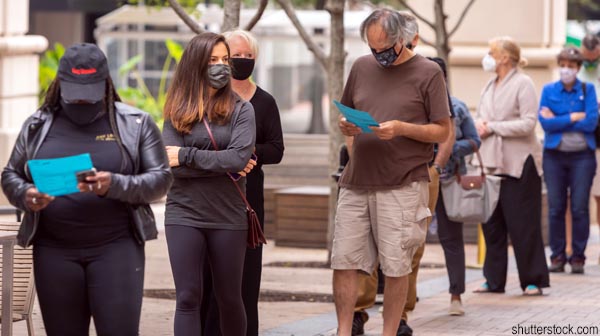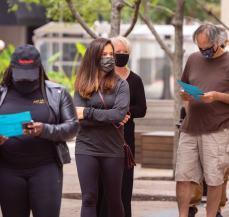
The COVID-19 pandemic has had downstream effects on global elections as governments are forced to balance health and safety concerns of the public against the need for maintaining a democratic process. To optimize the chance of a safe election from a public health perspective, all citizens must play a role in reducing community transmission.
Explore This Issue
ACEP Now: Vol 39 – No 10 – October 2020Before Election Day
A low community transmission rate on election day will minimize the chance of exposure and infection in voters, poll workers, and election officials. Local public health departments are promoting this objective through three strategies: behavior modification, disease surveillance, and outbreak control.1
Behavior modification guidelines target preventing disease transmission and include recommendations for individuals and organizations. These include isolation and quarantine of people who have symptoms of COVID-19, vigilant surface cleaning, hand hygiene, respiratory etiquette (covering coughs or sneezes), masking while in public or when interacting with people outside of one’s immediate household, and maintaining physical distancing of six feet or greater with others.
Disease surveillance requires a robust testing program with adequate supply of materials, efficient laboratory test turnaround times, and delivery of results to patients and health care workers. Stratification of data by demographic factors including age, race/ethnicity, and neighborhood will help communities respond to rises in disease transmission rates. Public health departments should partner with a variety of community stakeholders to promote active engagement in testing efforts.

In Arlington, Virginia , people line up and look at sample ballots during first day of early voting, 2020 presidential election.
Shutterstock.com
When a case is identified through testing, successful outbreak control requires case investigation and contact tracing (CI/CT). Although time-intensive, effective CI/CT programs have been shown to reduce the reproductive rate of the virus (the R) from local values of more than 2.0 to 0.4 by offering two key interventions.2 First, a case investigator should educate an infected individual on how to self-isolate for up to 14 days to decrease transmission to others. Successful isolation may require referrals to social services such as isolation and quarantine hotels, food delivery programs, or temporary income assistance. The second important step, contact tracing, involves determining who else in a patient’s household, workplace, and community may have been a “close contact” (a person who was exposed to the person for greater than 15 minutes). Close contacts are contacted by the department of public health and are confidentially advised of an exposure; assessed for symptoms; and advised for quarantine, self-monitoring, or testing, depending on the time since exposure and symptoms.3
Role of Emergency Physicians
Emergency physicians can play a role in helping patients stay healthy and vote safely this November through both clinical care and communication. Most directly, our duty as frontline physicians involves ensuring that members of higher-risk groups (eg, older individuals, immunocompromised individuals, residents of group living facilities, and essential workers) are appropriately tested leading up to and following the election. This includes excellent history-taking around symptoms and potential exposures as well as identifying close contacts so cases can be identified early and spread of disease is mitigated.
Pages: 1 2 3 4 | Single Page




No Responses to “Safe Elections During COVID-19: The Role of Emergency Medicine”